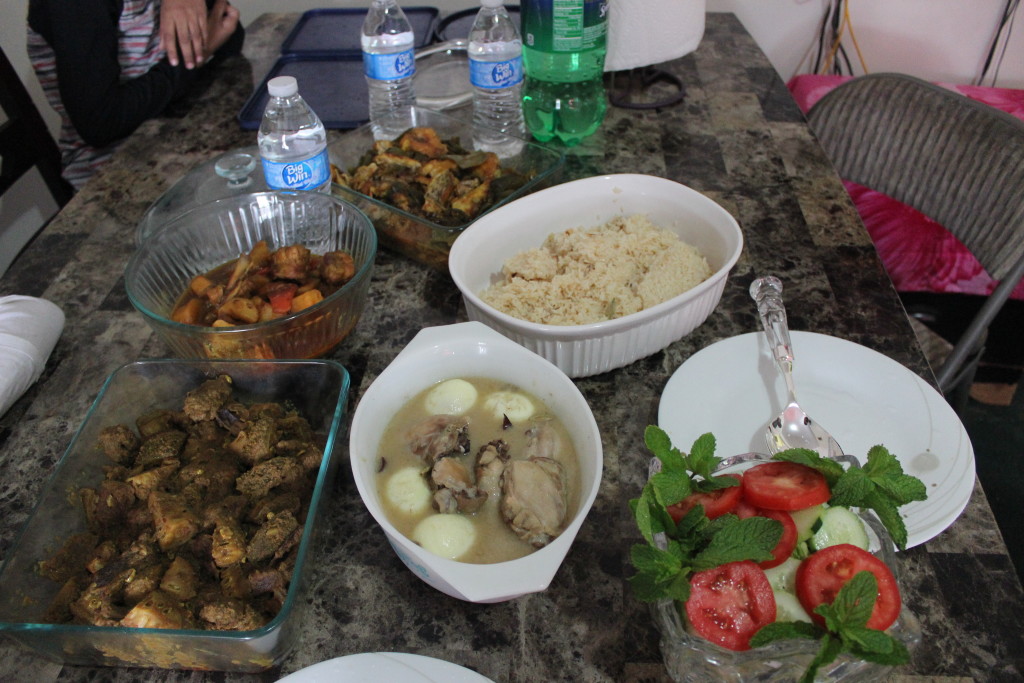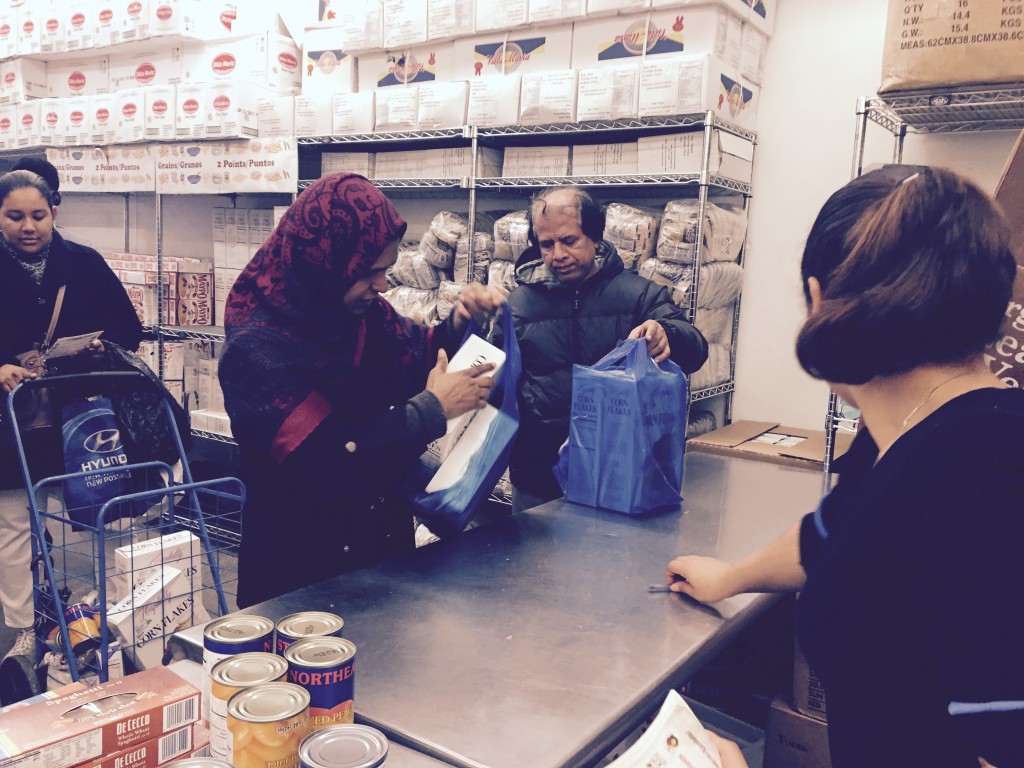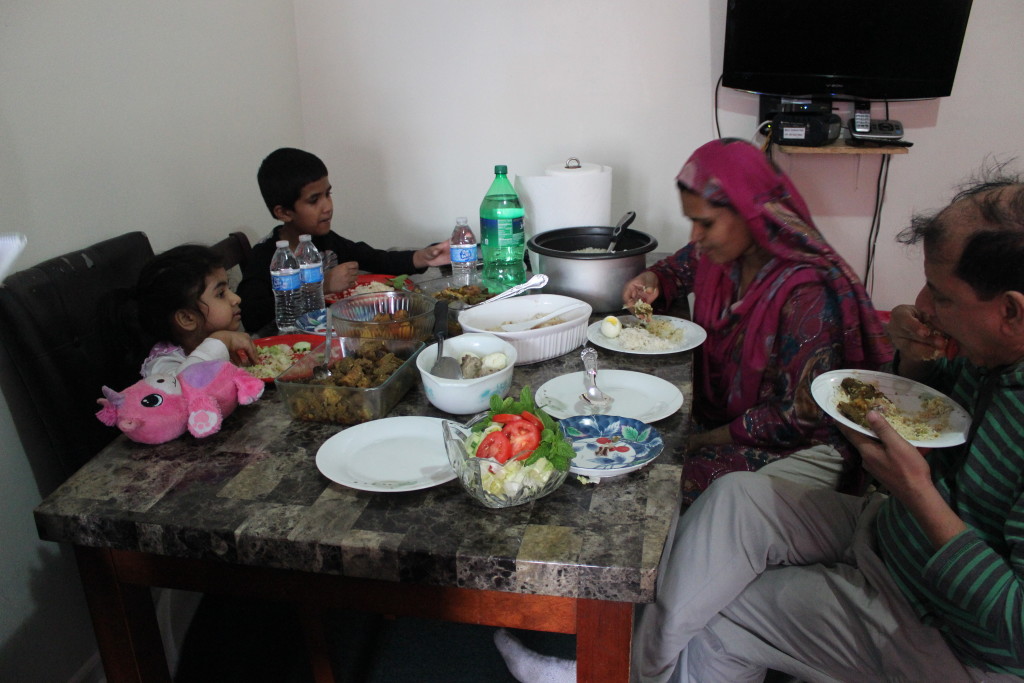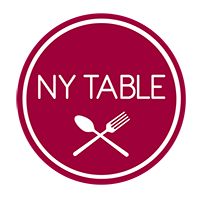Employed, helping relatives, and running out of food

Bengali food features strong aromatic flavors and historical influences. Since the 1990s, the country has improved significantly in the Global Hunger Index but according to 2015 results, 16 percent of the population is still undernourished. Photo: Ilgin Yorulmaz.
By Xinyu Jing
It was a Wednesday afternoon. After preparing dinner for three hours, Shahnaz Begum sat down with her husband, Md Rahman, her younger daughter, Akila, and her younger son, Jawad to have dinner. Sabrina, the elder daughter and Joynal, the elder son were still at school.
Though they left Bangladesh for the Bronx seven years ago, they still eat food from home: Beef curry, Aloo potato and chicken curry, Shim Diye (fish curry), Biryani (a mixed rice dish,) vegetable salad with cucumbers and tomatoes in it, and Korma (meat or vegetables braised in a spiced sauce made with yogurt, cream, nut or seed paste.) Shahnaz put rice on her children’s plates, poured some curry soup over it and asked them to choose between beef, fish and chicken.
They chose chicken. Akila stood just a little taller than the table because she is only four. Her pink bear toy sat on the table, watching her eat. Jawad is in third grade and likes laughing at his sister, “Look at you! It’s on your mouth. ” As Bangladeshi Muslims, they used their right hands to eat, instead of cutlery.
Shahnaz likes to cook, and heats the leftovers for the following days to save time. But 20 days into the month, meat and eggs will disappear, and the family will rely on what Jawad calls “vegetable curries.” The family’s $600 in monthly SNAP benefits is not enough. The couple estimates that $300 to $400 more would make their life better.
As new Muslim immigrants in America, hunger is one of the common problems they face. Md works as a security guard at night for a construction company and earns a maximum of $20,000 per year. Shahnaz is a part-time cashier at Popeye’s, working about 20 hours a week and earning minimum wage. And in addition to their own family costs, they help relatives: For example, they send $200 every month to one of their nephews for his college living costs back in Bangladesh.
Sabrina, 11, still remembers a difficult day last summer, “The weather was extremely hot. And we didn’t have any food except some fruits,” she said. Compared to her parents, who still need to go to ESL school, she speaks English well, and just won a spelling competition. Her medals stand in the closet, near to Jawad’s.
School lunch is another challenge. “Of course they don’t have rice,” said Sabrina. “I don’t like what they offer.”
In 2014, City Councilman Rafael Espinal, a Brooklyn politician, advocated for schools to offer halal lunches to Muslim students. Kamal Bhuiyan, chairman of The Bangladeshi American Advocacy Group, told The Daily News that his two children often come home hungry because they cannot eat any of the cafeteria food offered in their Queens schools.
Jawad also complains about his school lunch, “I only eat apple, orange and some French fries.” But he’s hungry, so he buys snacks at the stores near his school. Though he never feels full after eating chips, he loves them: Ten minutes after dinner, he started eating a snack called Takis Chips, which contains 150 calories and cost $1.99. “Sometimes I eat it when I’m hungry at night, ” he said. His mother knows that chips are not healthy but doesn’t want to say no to her son.
According to the New York City Coalition Against Hunger 2015 Report, the Bronx (the urban county with the highest level of poverty in the U.S.) has the highest percentage of food insecure residents, with more than one-quarter of Bronx residents struggling against hunger.

Every month, the Begums take a 45-minute ride by train and bus to come to the pantry on Webster Avenue in the Bronx. Photo: Ilgin Yorulmaz.
The family enrolled in a monthly food pantry service on Webster Avenue, Part of the Solution (POTS), to get free food, even though it is a 45-minute trip on a bus and subway. POTS gives each recipient 60 points each month to exchange for food like chicken, potatoes, canned food and some milk. The charity also offers a community dinning service, open daily, so that hungry people can have a healthy meal.
“The sheer number of individuals that are in poverty present an incredible challenge for POTS. Many POTS families face deep poverty and have no income earners in their household,” said Christopher Bean, the executive director of POTS. The median monthly income for a POTS client is approximately $700 a month, which makes most POTS clients unable to afford basic necessities like shelter and food.
Andrew Ohakam, a teenage Bronx resident, has volunteered at POTS for four months as part of his compulsory community service for school. Andrew tries to help recipients, but had trouble understanding the Begum family’s English.
In June, the family is going to visit Bangladesh for three months and will be back before the children’s first day of school. The grown-ups are excited. Md misses Hakim Pury, a kind of Bangladeshi chewing tobacco which he couldn’t find in New York City. But the children aren’t that pleased; they seems to prefer America though life isn’t easy here. And Md admits that there are challenges at home as well, not the least of them being access to healthy food. Here, he worries about having enough to eat. There, he worries about the quality of the water, and about limited access to healthy ingredients.

Back in Bangladesh, the Begum family used to grow most of their own vegetables. Since moving to the U.S., they had to adapt to life here, food and otherwise. Photo: Ilgin Yorulmaz.

Your Comments